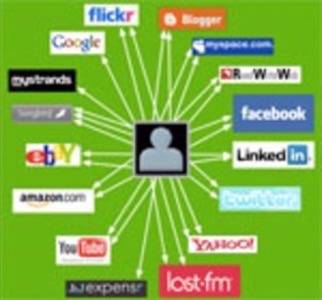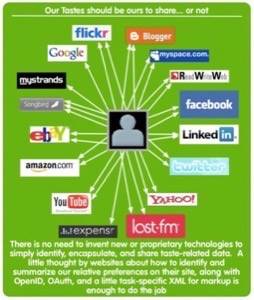Fifteen or so years into the evolution of the web, we already have many of the key ideas and technologies in place to start describing and sharing personal preference information – or what we might colloquially call “taste” – in order to personalize web experiences. So, why haven’t we yet seen widespread adoption of web personalization? Mostly because user expectations and online business models haven’t yet evolved to the point that user-controlled, open taste sharing is a viable option. However, the dataportability.org initiative suggests that we may have reached a turning point.

This is a guest post by Dr. Rick Hangartner, MyStrands Chief Scientist.
The DataPortability project taps into the strong conviction, engendered by the do-it-yourself nature of the web 2.0 movement, that individuals should “have control over their data by determining how they can use it and who can use it”. This extends to an inherent belief that that it has not been a lack of effective technology that has held back this new culture of open data sharing, but rather business models that have been over-reliant on laying a proprietary claim to some portion of that data.
Taste sharing is a DataPortability use case
We express our online tastes any time we make a choice between the various alternatives available to us. Some of our choices may be characterized by the number of times we select each option when repeatedly confronted with the same choice – for example the number of songs of each genre we play when we select music. Other choices may be expressed subjectively, such as assigning one to five stars to movies we watch, when we are asked to rate our preferences for the different alternatives. In yet other cases, we may in effect be giving estimates for the number of times we would expect to select each alternative, such as when we are asked if we are likely to buy a product or vote for something. Virtually any online experience we have includes one or more instances in which we make conscious choices reflecting our preferences.
For the more theoretically inclined amongst us, we can view a choice as somewhat analogous to a random experiment and our relative preferences as measures of the different possible outcomes of the experiment. The collection of such experiments that we participate in as a matter of course in our web experiences paints a vivid picture of our taste. For the more pragmatic: each time we make choices, we generate data which empirically describes our preferences. This is data that can be encapsulated and shared just like any other picture, blog post, video, or other piece of online content that we create; and which the DataPortability project is focused on.
A few ideas for open taste sharing
As a DataPortability use case, open taste sharing embodies and embraces the culture shift that the Web 2.0 movement represents. With regard to data ownership, the DataPortability concept has even more succinct expression: our tastes should be ours to share, or not. This puts the user in control of their online experience, so they can set the boundaries of how much they want to share and with whom. Similarly, there is no need to invent new or proprietary technologies to simply identify, encapsulate, and share taste-related data.
A little thought by websites about how to identify and summarize our relative preferences on their site is enough to do the job – along with OpenID, OAuth, and a little task-specific XML for markup. However clearly this kind of data sharing also raises new privacy concerns, which is part of the work-in-progress for the entire DataPortability project.
Image by MyStrands

Perhaps the most interesting challenge lies in educating businesses to thoroughly and thoughtfully examine their current ideas about user data, so they can better understand and enthusiastically embrace The Web 2.0 Golden Rule: “Do for other web experiences providers as they would do for you – under our control as the owners of our taste data – and the blessings of networks effects for taste data shall be yours.”
This is a guest post by Dr. Rick Hangartner, MyStrands Chief Scientist. You can follow Dr. Hangartner on the MyStrands blog.










